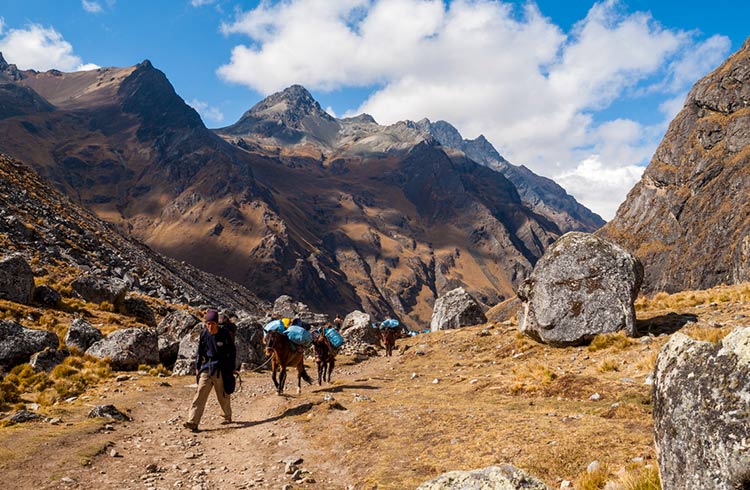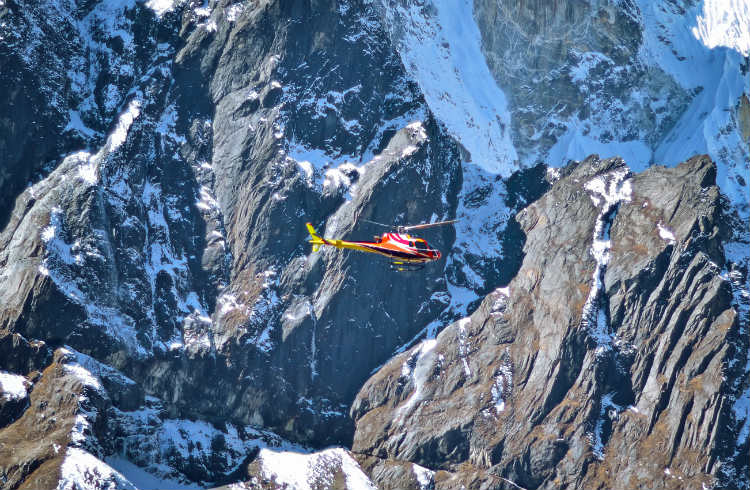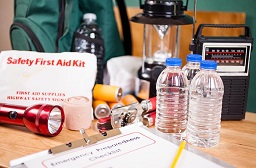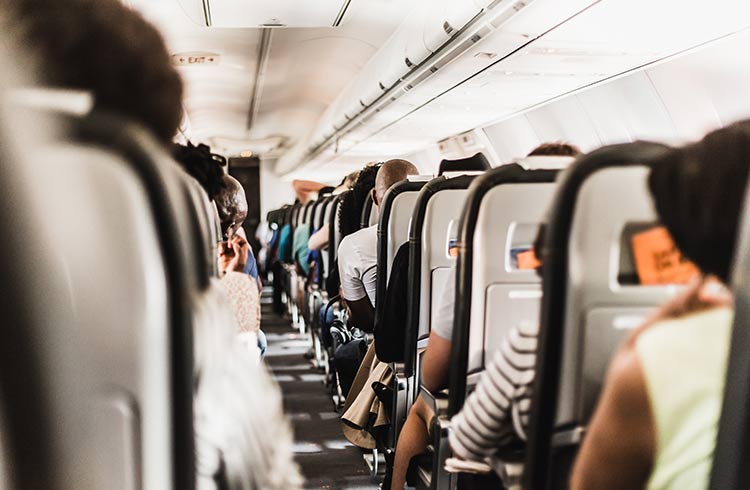Altitude Sickness: What Every Traveler Needs to Know
Altitude sickness won't just slow down your trip, it can also be a potential killer. Find out about the symptoms, treatment and prevention of this medical condition.
Shares
 Photo © iStock/holgs
Photo © iStock/holgs
Altitude sickness, also called Acute Mountain Sickness (AMS), can be deadly. A bit of knowledge and preparation prior to hiking (or walking around) at altitude can mean the difference between a safe trip or a headache-filled experience that could potentially end with a medical evacuation off a mountain.
Perhaps the most important advice to follow is that illness and headache at altitude should always be considered altitude sickness until proven otherwise.
What is altitude?
Altitude is generally divided into the following levels:
- High altitude ranges from 4,950 - 11,500ft (1,500 - 3,000m). A traveler headed to this level will typically experience decreased exercise performance and increased breathing rates. Altitude sickness is more common above 8,200ft (2,500m)
- Very high altitude ranges from 11,500 - 18,050ft (3,500 to 5,500m). Severe altitude sickness is more common at this altitude, as well as hypoxia
- Extreme altitude is above 18,050ft (5,500m). Acclimatization to this altitude is impossible, and rapid ascent to this altitude is very dangerous.
Travelers headed to high altitudes should be aware of a few medical terms and conditions that they or their traveling companions might encounter.
Stages of altitude sickness
Acute Mountain Sickness/AMS
This is the broad term for altitude sickness. Symptoms of AMS include a headache (often throbbing, worse when bending over), nausea/vomiting, fatigue, and a general feeling similar to a hangover.
High Altitude Cerebral Edema (HACE)
This is a life-threatening emergency that has symptoms of ataxia (walking in a stumbling manner) and changes in mental status such as confusion or lethargy. This is literally swelling of the brain. Symptoms of AMS are also usually present.
High Altitude Pulmonary Edema (HAPE)
Is a life-threatening emergency with symptoms including a cough (wet or dry), difficulty breathing with mild exertion, and all the symptoms of AMS. Fluid collects in the patient's lungs.
Treatment
The definitive treatment for all altitude sickness is descent to lower altitudes.
Treatment of high altitude sickness of all kinds centers around the prompt recognition of the symptoms and realizing that altitude could be the cause of the illness. First and foremost, upon beginning to feel ill at altitude, do not ascend any higher.
Some experts even advise descending 1,600 - 3,200ft (500 - 1,000m) for 24 hours to allow the body to acclimatize more slowly. Medical treatment of more severe forms of altitude sickness such as HACE and HAPE should be given by a person skilled in altitude medicine. A traveler who suspects HACE or HAPE should immediately descend to a lower altitude and seek advanced medical care. Some medications discussed below may aid in the treatment, but the descent is the best medicine.
A portable hyperbaric chamber (known as a Gamow bag) can be used to simulate a lower altitude environment in emergencies and should be used only while preparing to evacuate the patient to a lower level, not as a substitute for descent.
Prevention
Prevent altitude sickness by making a slow and gradual ascent to altitude. Some experts advise not ascending more than 4,950 to 6,500ft (1,500 to 2,000m) in a 24-hour period when traveling above 8,200ft (2,500m). This gives the body a chance to acclimatize to the new altitude and an opportunity to observe people for symptoms of AMS. This slow and gradual ascent is easier when travelers are hiking.
Traveling by car up a mountain pass, or flying into cities such as Lhasa in Tibet and Cusco in Peru, can immediately expose a traveler to high altitudes without much time to acclimatize. Always be on the lookout for symptoms if traveling to high altitude locations and give yourself the chance to acclimatize if possible.
Sometimes, a slow and gradual ascent is not always possible. A few methods can help adjust the body to the shock of suddenly being at a high altitude. Some evidence supports mild exercise on the day of arrival such as a short walk, to aid with acclimatization. Heavy exercise on the day of arrival could be disastrous.
Alcohol or sedatives, which can mask the symptoms of AMS, should be avoided for the first few days of altitude. Staying hydrated is also important.
Altitude sickness medications
Certain medications can help prevent and even treat AMS. The most commonly used medication is acetazolamide. This medication is used to both prevent and treat symptoms of AMS. Often taken as a 125mg tablet, twice per day, acetazolamide is effective at preventing AMS symptoms. This medication has the potential to cause allergic reactions in people with a history of sulfa allergies and can change the way some foods or drinks taste, especially carbonated beverages. Overall, the medication is very well tolerated and is a viable option for travelers looking to take precautions in preventing AMS. This medicine should be started 24 hours before making an ascent, while at altitude and for 48 hours after a descent.
Dexamethasone is a steroid that can be used as a prophylactic medicine for those unable to tolerate acetazolamide. This medicine is best used as treatment but is still an option.
Ginko Biloba has received attention as a possible prophylactic AMS drug, but the medical literature is scant. Some research shows promise but acetazolamide is still considered the best preventative.
Lastly, the use of coca leaves, or products that contain this plant material, should be discouraged by travelers. While having many other applications, decent prevention of AMS symptoms is not one of them. Perhaps most dangerous is the "false sense of security" that one might have by taking coca leaf products and ignoring symptoms of AMS believing they are protected.
Overall, many travelers go to altitude each day on hikes and bike trails and return without problems. Keep an eye out for symptoms of altitude sickness in yourself and others around you. When traveling in the mountains, follow the golden rule of treating any headache or illness at altitude as altitude sickness until proven otherwise. Discuss your travel plans, and more importantly your ascent rate, with your travel doctor in advance and see if using any prophylactic medications might be right for your trip.



10 Comments
Also had many many local Sherpas in Nepal swear by Garlic soup
I made it to Everest Base camp out of Llasa as an elderly unfit traveller by taking prescription medication AS DIRECTED, ie before ascending. Several travel companions, fitter and younger, suffered badly having waited until symotoms set in.
I'll be traveling from china to Lhasa, I'm 52 years old. I've been hiking for about 3 weeks. After reading more about Lhasa I should have started a few weeks earlier. Can you tell me what prescription medication you took? Thank you
Maryanne, that is very encouraging. Hubby and I have been thinking about a trip to Base Camp in 2 years time. Hubby is 66 and I am 65 and all of our family and friends think we have lost our minds.
I travelled to Jiuzhaigou, China, in October 2016. 59 years old. Solo traveller. Took all the precautions, started the prescribed medication as directed, always had water with me, ensured I was comfortable - all this before I even stepped off the bus. At about 800m I started to feel the effects of AMS. It is very difficult to turn around, particularly when in a bus, when travelling up a sparsely populated area. I did make it to my destination, the medicine helped somewhat, but the decision to leave the day after I had gone to the park (maximum altitude 3000m) seemed the best plan. My main suggestion is to seriously consider having a travel partner for such excursions. I was fortunate to meet a kind young man who stayed with me at the park, ostensibly to practice his English, but perhaps also because he saw I was alone and reminded him of his parents.
I was 63, overweight and medium fit when I flew from Nepal into an airport near Lhasa. I had meds for AMS with me but had not started taking the tablets. There was a delay with our flight so our tour guide changed our itinerary. We were taken to a high monastery on route to Lhasa.This was quite a climb which meant we were forced into quite heavy exertion without a chance to acclimatise. Next day I felt ill and so did several others in their 20's and 30's all fitter and thinner than me. I had to back out of the morning activities and the meds I had gave me the runs. We visited several high monasteries up endless steps on route to base camp and I was slow in climbing the steps. I lost my appetite but managed some soup and ginger, lemon and honey in hot water.... always on offer. I acclimatised in a few days but never really recovered until our descent when a sudden feeling of wellness and energy came over me. All I can say is go to these wonderful places but be aware.
I still believe that the best medicine for the AMS is go down, lower the elevation and rest and medicine should be used only to buy time in case of urgency. The other ways are to know what and how one is effected on the elevation and take action in time!
Normally many people do well upto certain elevation and enjoy the trip in Nepal..that is great!
i have recently returned from Mount khailash trip in tibet..Reached heights around 21000 feet..The physical exertion is very intense..experiance breathing diffuculties,headaches and physical exhaustion many times..Its quite imporant not to make sudden movements,rapid climbing or jogging at these altitudes. Couple of my co travellers experianced unexplained blackouts.. Breathing through the mouth is recommended if ur lungs feels compressed. As advised staying ay these altitudes for more than couple of days will cause all kinds of long term issues like fluid collectiin in lungs, Sinus bleeding ,terrible cramps in legs and clots..Please take neccessary precautions such as checking your blood pressure and oxygen level everyday twice to avoid surprises..
I am doing the EBC trip in September. I will turn 62 the day after we see base camp. I hike twice on my days off. The rest of the week, I put on my pack and do the stairwells in the parking garage across the street from work. Due to extreme snow we got this year, I live in Reno, NV, I will not be able to get any high elevation hikes in until a few weeks before the trip. I will be taking Diamox. This is #1 on my bucket list, I feel like I am in the best shape of my entire life right now. Did a trip in Peru, went up to 15,500. I was 55, the oldest and the only one that didn't get sick. So here's hoping I can do this in September!
I'm going to be heading out on a camping trip in the mountains. It makes sense that I would need to be ready to deal with altitude sickness! I can see how that could be really uncomfortable if I'm not ready for it.